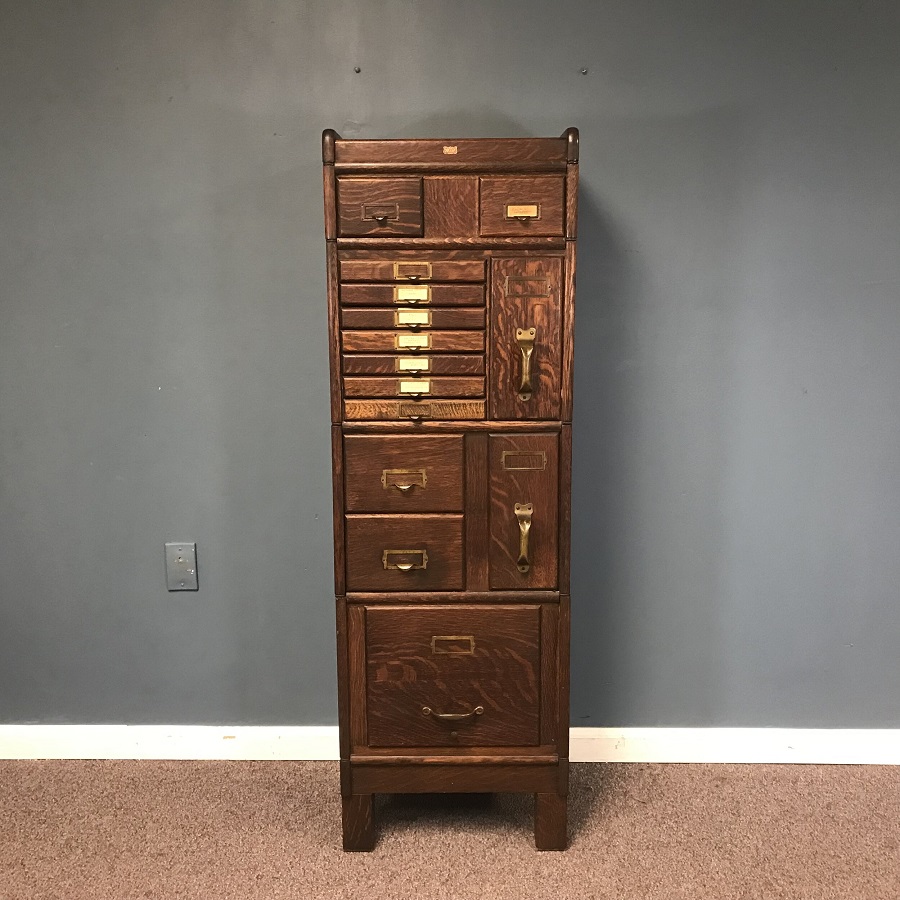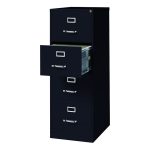Types of Filing Cabinets Suitable for Libraries
Libraries require a special type of filing system to manage their diverse collections effectively. Here are some filing cabinets that are highly suitable for library environments:
- Traditional Vertical Cabinets: These are tall, stand-alone units with deep drawers, ideal for housing books, reference materials, and archived documents.
- Lateral Filing Cabinets: They offer a wide design that enables easy viewing and retrieval of documents. Their horizontal layout works well in spaces with limited vertical clearance.
- Mobile Filing Systems: These systems allow for high-density storage. Mounted on tracks, they can be compacted to save space and expanded for access.
- Rotary File Cabinets: With a rotating inner cabinet, these units provide two-sided access in a single footprint, making them space-efficient and convenient.
- Multimedia Storage Cabinets: Specifically designed for various media formats, these cabinets come with adjustable shelving for DVDs, CDs, and other digital media sources.
- High-Density Shelving: By eliminating aisles, these units maximize floor space without sacrificing the ability to access the collection.
Incorporating these types of library filing cabinets can greatly enhance a library’s ability to store books and documents efficiently while making the best use of available space. For libraries looking to upgrade or establish a new filing system, considering the mix of collection types is vital to choosing the right filing cabinets.
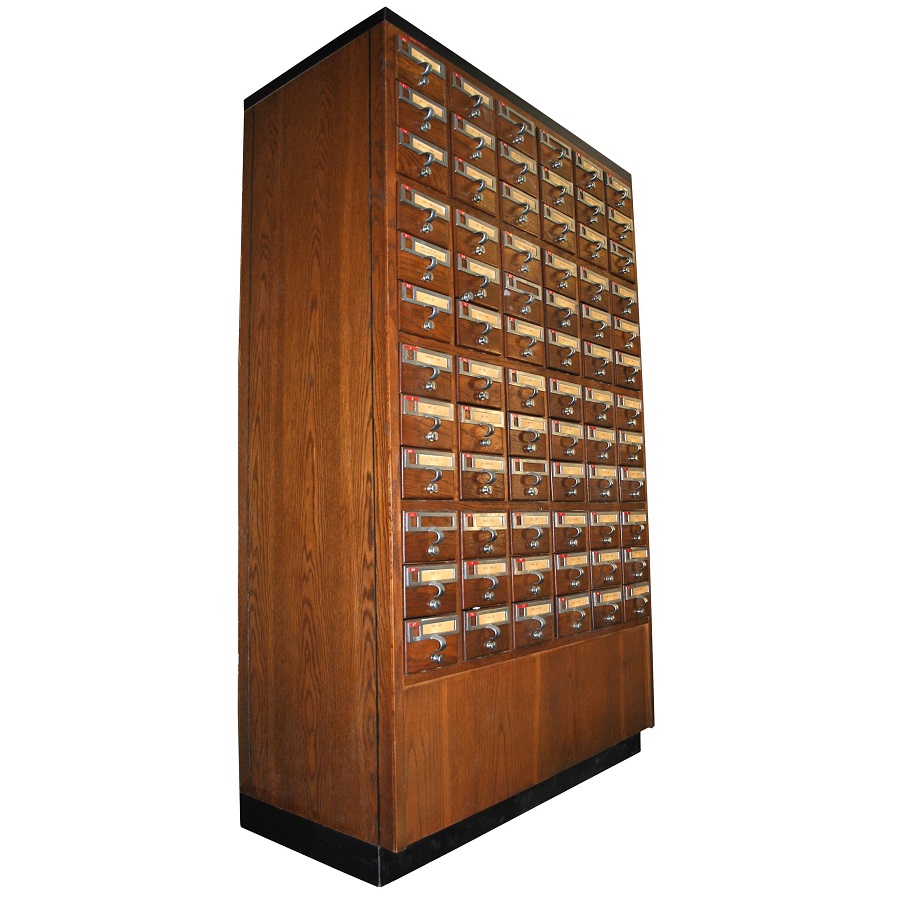
Space Planning: Optimizing Cabinet Layout
Effective space planning is crucial in a library’s environment, particularly when integrating filing systems. Proper layout optimization not only ensures the seamless flow of patrons but also maximizes the utility of each square foot. Here are key strategies to optimize cabinet layouts in libraries:
- Measure your space: Start by carefully measuring the library’s dimensions, including ceiling heights and any obstructive elements such as pillars or fixed furniture.
- Prioritize accessibility: Arrange library filing cabinets to allow for easy access, maintaining clear passageways for patrons and staff to navigate through.
- Consider traffic flow: Position cabinets in a way that aligns with the natural traffic patterns of users, ensuring a logical and intuitive arrangement.
- Use vertical space wisely: Take advantage of vertical space with taller cabinets if floor area is limited, but ensure top shelves remain reachable with appropriate tools or steps.
- Plan for expansion: Libraries grow over time. It is important to select a layout that can accommodate additional cabinets or shelving units in the future.
- Integrate flexible systems: If possible, incorporate mobile filing systems that can be reconfigured as needs change, allowing for dynamic space management.
By implementing these strategies, libraries can create an efficient and adaptable space that caters to their specific filing needs while ensuring the environment remains comfortable and user-friendly for all.
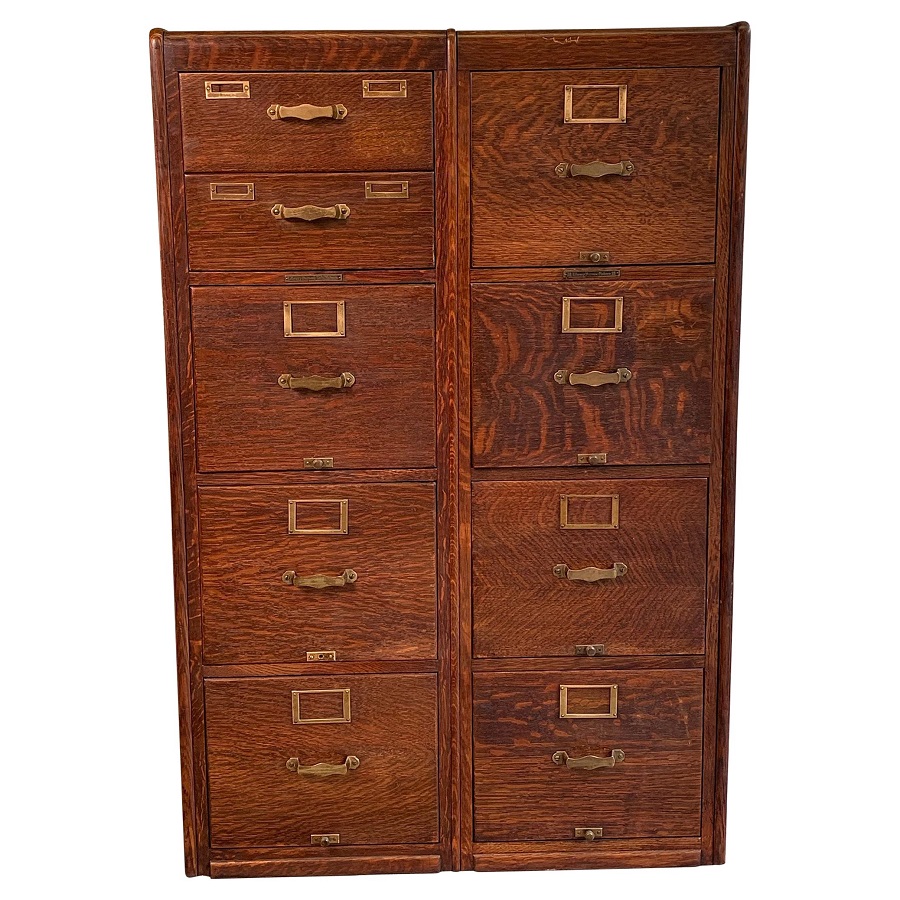
The Importance of Material Durability and Maintenance
Choosing the right materials for library filing cabinets is essential. Durability ensures the longevity of cabinets under frequent use. Libraries need systems that can withstand the weight of heavy books and materials for years to come. Cabinets made from high-quality steel or wood are often the best choices. These materials can handle the daily wear and tear of library operations.
Regular maintenance is also key to prolonging the life of filing cabinets. It keeps them functional and presentable. Dust and clean the exterior surfaces regularly. Check and tighten hardware such as screws and handles. It is important to fix any misalignments promptly to prevent further damage. Lubricate drawers and tracks to ensure they open smoothly.
By focusing on durable materials and regular maintenance, libraries can protect their investment. This leads to reduced replacement costs over time. In choosing library filing cabinets, consider not only the initial cost but also the long-term value they bring.
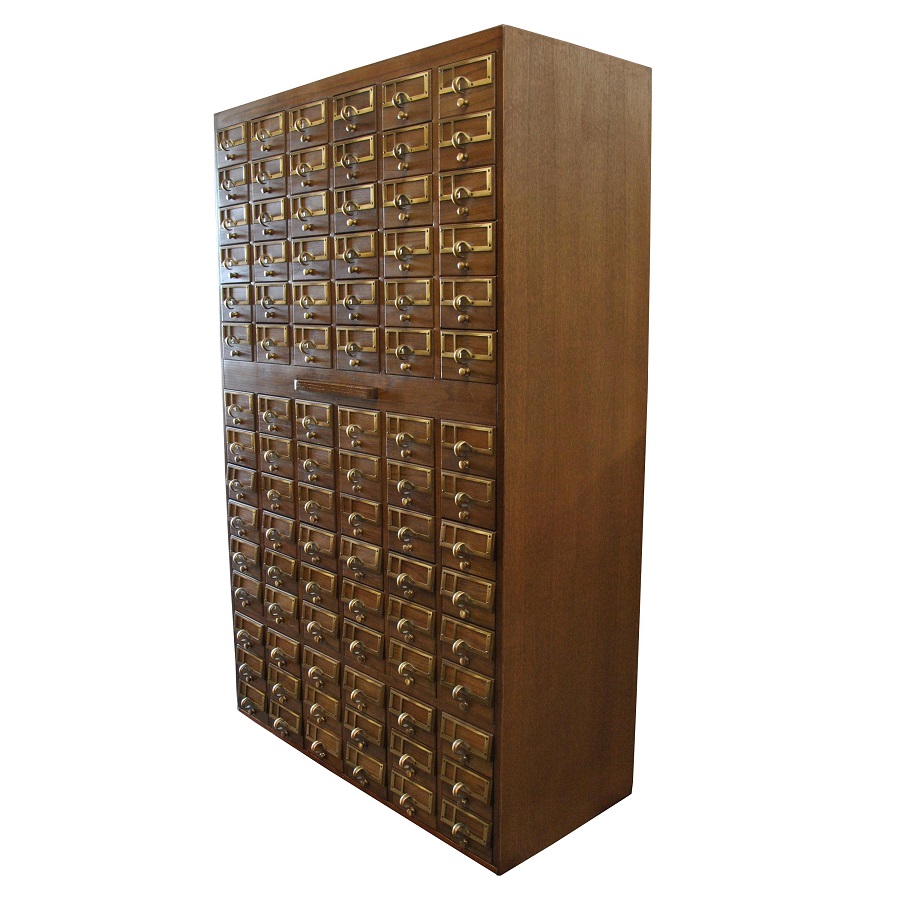
Innovative Filing Cabinet Features for Libraries
Libraries today are not just about traditional storage; they need to be adaptable and tech-friendly. Let’s look at some features that modern library filing cabinets offer:
- Customizable Dividers: Dividers that can be adjusted make it easy to organize materials of different sizes.
- Lockable Drawers: Security is key, and having lockable drawers protects sensitive information.
- Labeling Systems: Clear labels help users find what they need without hassle. Many cabinets include built-in labeling solutions.
- Soft-Close Mechanisms: Prevents drawers from slamming and reduces noise – a plus in a quiet library setting.
- Lightweight Materials: Newer filing cabinets use materials that are strong yet easy to move, allowing for quick reorganization.
- Integrated Technology: Some cabinets come equipped with USB ports and charging stations, a nod to the digital age.
These features help maintain an organized, user-friendly environment. They also ensure that library filing cabinets serve their purpose without compromising on modern-day needs.

Organizational Systems within Filing Cabinets
When it comes to library filing cabinets, the internal organizational system is as crucial as the cabinet’s exterior. Efficient organization inside the cabinets can significantly enhance retrieval times and contribute to a better user experience. Here are effective organizational tools and strategies to consider:
- Adjustable Shelving: Shelves that can be moved to accommodate different book heights and sizes are essential.
- Drawer Dividers: These can be used to segment drawers into sections, making it easier to categorize and find smaller items.
- File Followers: A device used to keep files upright and neatly in place, especially when the drawer is not full.
- Color-Coding: Implementing a color-coded system aids in the quick identification of different genres or sections.
- Indexing Systems: Alphabetical, numerical, or subject-based indexes at the cabinet or drawer front end ensure quick retrieval.
- Transparent Label Holders: Allowing staff and patrons to identify contents without opening multiple drawers saves time.
Empowering users to find what they are looking for quickly and efficiently is a key benefit of a well-thought-out organizational system within library filing cabinets. It leads to a more productive environment and ensures that the library’s collection is accessible and manageable.
Balancing Aesthetics and Functionality
When selecting library filing cabinets, it’s vital to balance looks with practical use. A library is more than a storage space; it’s a place where aesthetics and functionality must blend for an optimal environment. Here are key points to consider to achieve this balance:
- Design Harmony: Choose cabinet styles that complement the library’s existing decor. They should enhance the space, not clash with it.
- Material Finishes: Opt for finishes that are not only durable but also visually appealing. Wood grain or colored steel can add warmth and texture.
- Functional Form: Cabinets should be accessible and easy to use. This means considering the height and handle design for comfort.
- Discreet Integration: Aesthetic shouldn’t disrupt service. Cabinets can have sleek lines and low profiles to merge into the setting.
- Inspiring Spaces: Aim for a design that stimulates learning and creativity. This can mean using color or arranging cabinets to form inviting spaces.
By targeting both eye-catching design and practical functionality, libraries can offer a welcoming space that promotes education and enjoyment.
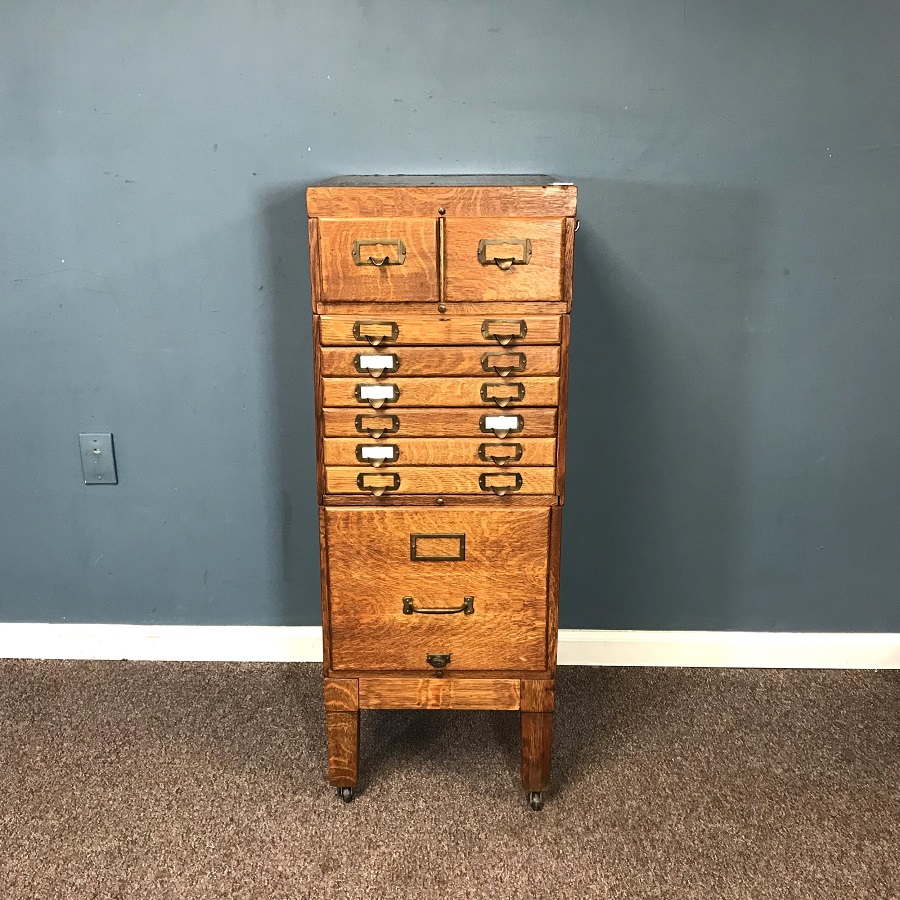
Safety Considerations for Library Filing Cabinets
When looking at library filing cabinets, safety is a vital factor to consider. Ensuring that the library environment is secure for patrons and staff is crucial. Here are some safety tips to keep in mind:
- Stable Base: Make sure cabinets have a steady and robust base to prevent tipping.
- Anti-Tip Mechanism: Install anti-tip devices on every unit. This is important for tall and heavy cabinets.
- Rounded Edges: Choose cabinets with rounded corners to minimize injury risk in case of bumps.
- Accessible Fire Extinguishers: Position fire extinguishers nearby. This ensures quick response in case of emergency.
- Clear Aisles: Maintain clear aisles at all times. Clutter-free pathways prevent trips and falls.
- Load Management: Avoid overloading drawers. Distribute weight evenly to maintain cabinet stability.
- Regular Inspections: Perform regular checks on cabinets for loose parts or damage. Fix issues immediately.
- Emergency Drills: Conduct evacuation drills. This ensures everyone knows how to navigate around cabinet layouts safely.
By incorporating these safety measures, a library can maintain a secure environment. This is essential for the protection of its resources and the people who use them.
Cost-Efficiency and Budgeting for Library Storage
When choosing library filing cabinets, cost-efficiency must be considered alongside quality and functionality. Here are steps to ensure that your library gets the most value for its investment:
- Set a Budget: Determine the budget for filing cabinets and stick to it. Avoid overspending by planning ahead.
- Compare Prices and Features: Research various models and compare prices. Look for features that meet your needs without breaking the bank.
- Consider Longevity: Invest in cabinets that are durable and low-maintenance. This can save money on repairs and replacements in the long run.
- Seek Multipurpose Units: Opt for filing cabinets that serve multiple functions, reducing the need for separate pieces of furniture.
- Look for Warranty and Service Plans: Purchase from manufacturers that offer good warranty terms and service plans for their cabinets.
- Buy in Bulk: If multiple units are needed, consider buying in bulk to potentially receive a discount.
- Check for Discounts or Grants: Libraries can sometimes take advantage of discounts, grants, or educational pricing.
Allocating the right resources towards storage solutions, like library filing cabinets, is crucial for library management. By budgeting wisely and seeking cost-effective options, libraries can maintain a well-organized system that serves their communities effectively while mindful of financial constraints.
